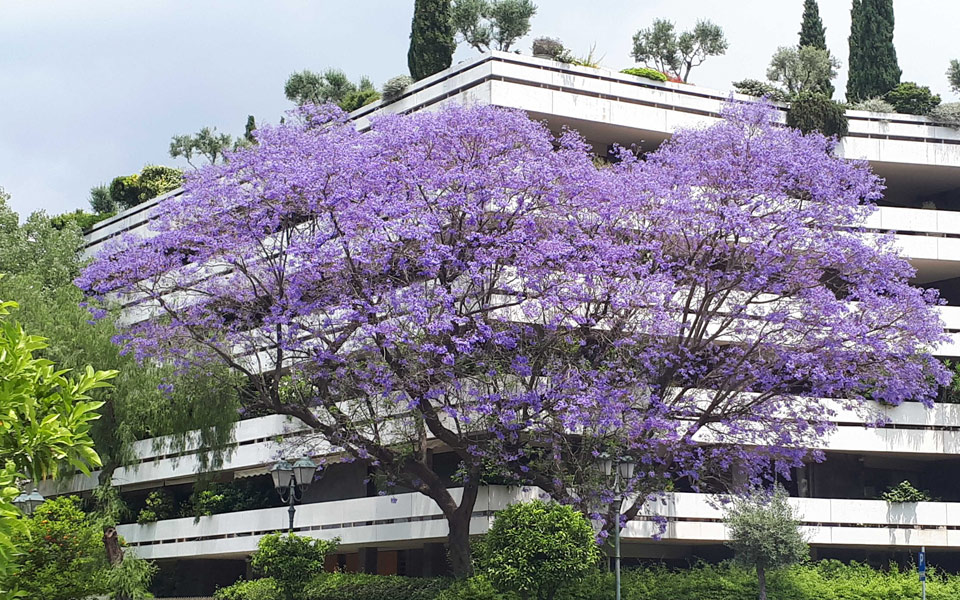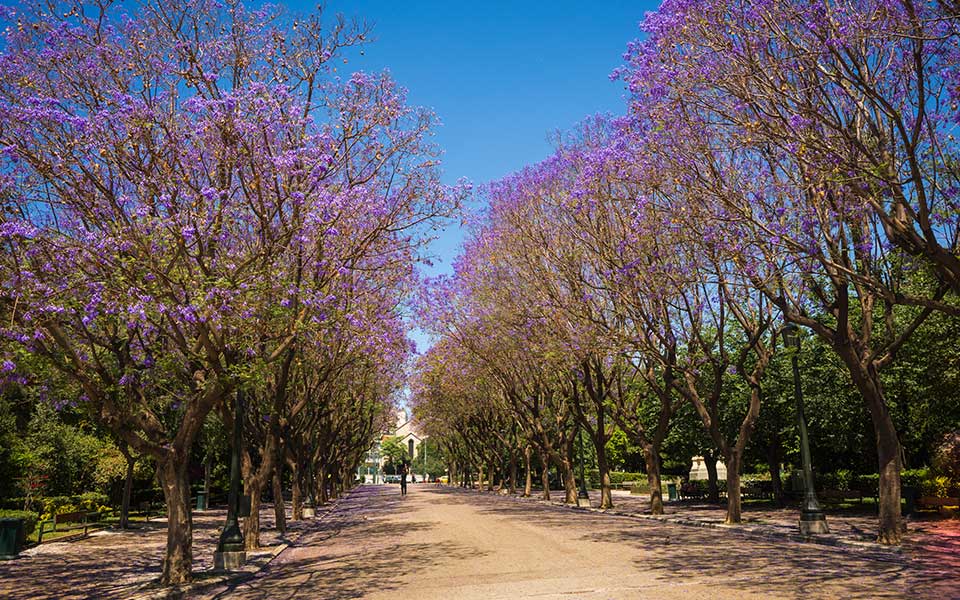“Jacarandas playing castanets and dancing
Threw around their feet a violet snow”
George Seferis, Logbook II
The lines from our Nobel Prize-winning poet refers to a scene in Pretoria, South Africa, but he would be equally accurate if he were describing the route from Amalias Avenue to the Zappeion Hall, a lane which, in springtime, is painted purple by the fragrant flowers covering the towering jacaranda trees (Jacaranda mimosifolia) along the way. This tropical species probably came to Athens along with thousands of other trees and plants brought from Genoa by Queen Amalia’s gardener for the Royal Garden, today known as the National Garden. The visitor who loves flowers will also spot these trees on Rigillis Street, on Aghias Irinis Square in the historic “commercial triangle” of Athens, and in other spots throughout the city.
With the exception of Protomagia (“May Day,” celebrated on the first of May), when flowers and nature in general are honored, Athenians don’t celebrate the springtime flowering season as, say, the Japanese do with their famous “hanami,” or “Cherry Blossom Festival.” There, television broadcasts include a daily cherry-blossom bulletin where the progression of blooming is meticulously charted on maps of Japan. In Athens, you won’t find many cherry trees – regarding the few that the city does have, there’s an unconfirmed story that the Japanese Embassy donated them to Greece – but there are thousands of other trees, native and non-native, that fill the city with wonderful colors and scents in spring.

In Athens, the role of the cherry tree is played instead by the “neratzia,” or bitter orange tree (Citrus aurantium) which, incidentally, is also an import. This plant was chosen by city planners for its durability and for its relatively thin trunk, which is an advantage when it comes to sidewalk planting on the normally narrow Athenian sidewalks. Bitter orange trees constitute almost a third of all the city’s trees and, when they’re in bloom, you can smell the flowers’ amazing aromas almost everywhere. The fruit, which looks like a regular orange, is unbearably bitter, a fact German soldiers found out the hard way when they occupied Athens in WWII. It does, however, produce delicious marmalade, although it’s best not to use fruit collected from the streets of the capital because they will, depending on the location of the tree, contain unacceptable levels of solid exhaust residues.
Another tree that’s characteristic of the city is the “koutsoupia” (Cercis siliquastrum), known in English as the “Judas tree”, with dense purple flowers. There are many of these growing alongside streets such as Amalias, Ippokratous, Akadimias and Aiolou, and in hundreds of other places as well. Also participating in the Athenian “hanami’ is the “glysinas” (Wisteria sinensis), of Chinese origin, which adorns urban spaces around the capital, climbing to great heights and often covering the facades of entire apartment buildings, as you can see on Mavrommataion Street, opposite the Pedion tou Areos park.
Our “hanami” clearly doesn’t have the delicate beauty created by those cherry trees lining the moat at the Imperial Palace of Tokyo or scattered around Kyoto’s Arashiyama district. However, it does offer hundreds of beautiful corners that will easily charm the springtime visitor who takes the time to seek them out.












